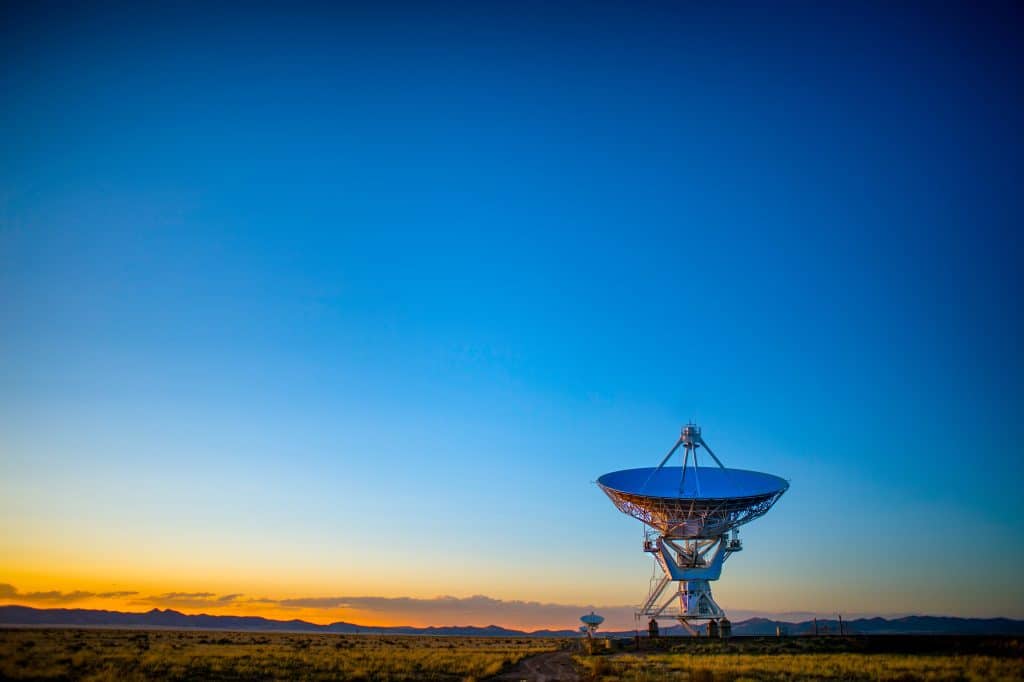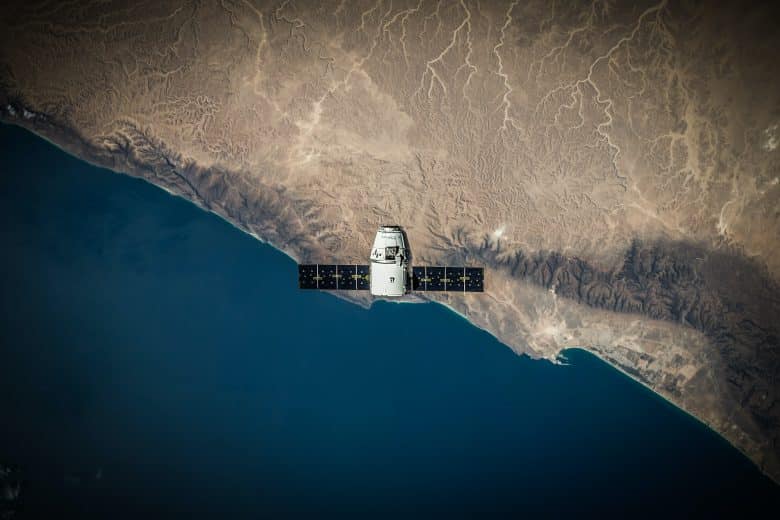Satellites have contributed significantly to the development of different industries, mainly information and communication technologies. Many breakthroughs, such as intercontinental telephony, the creation of reliable networks for corporate data transmission, or live broadcasts from remote regions, would not be possible without satellites. Today, satellite technology continues to develop. It’s applied in many business and manufacturing sectors. Satellite data and satellite pictures of earth has become available like never before, expanding the possibilities in various human activities.
What Is a Satellite?
A satellite is an object that moves around the Earth. It performs various functions. For example, satellites are used for weather forecasting, Internet communications, and GPS. They also provide an opportunity to observe our solar system, explore it and collect data.
In the communication industry, a rocket delivers a satellite into orbit and serves as a wireless transmitter and receiver. Up-to-date satellites can receive and relay signals, including simple digital signals and complex TV programs. They also enable people to get the most up-to-date satellite images.

The Number of Satellites in Space
Today, there are about 7,400 active and inactive satellites in orbit. Until about 2010, up to 100 satellites were launched annually, and after 2020 this figure has increased to 1000 new launches. In 2021, a record-breaking year for launches, another 1,400 satellites appeared in orbit. According to the announcements of different organizations, the number of launches will grow in the next few years.
How Do Satellites Orbit our Planet?
Many people have probably wondered how satellites do not fall and fly further into space from orbit. The gravity of the Earth creates balance, and it also controls the speed of rotation. Satellites can rotate in geostationary and polar orbits, while the trajectories, speed, and altitude of their movement are different.
Movement in geostationary orbit occurs from west to east over the equator, at the same speed and in the same direction as our planet. If someone looks at a satellite of this type from the surface of the Earth, it seems that it’s not moving.
In a polar orbit, movement in a north-south direction from pole to pole. Such satellites thoroughly scan the planet and provide us with live satellite view from different angles.
Types of Satellites and Their Application
Satellites perform many functions, providing communication, television, and the Internet. They also help specialists in various industries to obtain satellite images of Earth to see what is not available to the naked eye. This industry is called observation of the Earth and space. Satellites also play a crucial role in navigation technology development.
Earth observation or remote sensing satellites
Earth remote sensing satellites are designed to observe our planet from orbit. These satellites can be used for military purposes, mapping, environmental and weather monitoring.
EO satellites enable humanity to monitor and study the environment and manage resources sustainably. Furthermore, they enable quick and effective responses to various disasters on our planet. Many industries receive crucial information for their operations, thanks to the satellite view, including data on air quality, ocean salinity, ice thickness, and crop health.
Navigation satellites
Navigation satellite technology includes positioning, navigation, and synchronization satellites and the Global Navigation Satellite System. Satellite data cluster application makes it possible to create a system for providing accurate time and position data on the surface and additional information, including altitude.
Communication satellites
A communications satellite is a signal relay from one point on the planet to another. Such satellites are usually geosynchronous, covering the same area of the Earth. Communications satellites provide mobile and telephone communications and radio communications between ships and shores. They are repeaters of radio and television signals from the broadcast point at stations throughout the country.

Weather satellites
Weather satellite technology enables weather systems monitoring around the world. Today, more than 150 meteorological satellites observe our planet. Sensors on these satellites scan the surface, measuring reflected light and infrared temperature. After it’s digitized, the data is sent back to Earth and turned into images.
Space exploration satellites
These satellites are not satellites; they are probes that do not revolve around the Earth but go into space on their own. They send data to Earth about other places in our universe. These satellites are designed to last for a long time as they need to get to their destination.














Leave a Reply